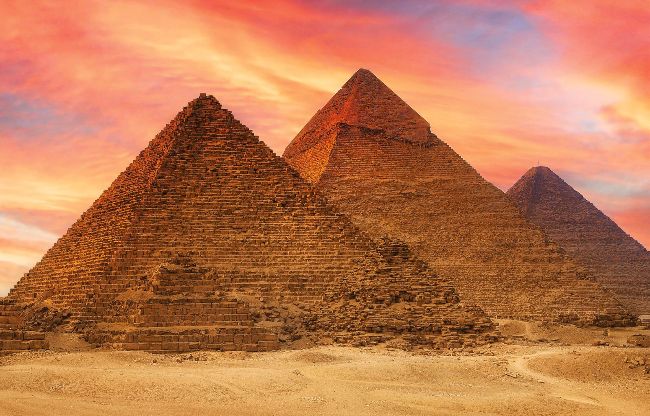HISTORY
A vanished arm of the Nile helped build the pyramids
WORDS OWEN JARUS

New findings shed light on the Nile’s water level at the time the Giza pyramids were built
Did you know?
Khufu was the second pharaoh of the Fourth Dynasty
When the ancient Egyptians built the pyramids of Giza around 4,500 years ago, the Nile River had an arm – one that has long since vanished – with high water levels that helped labourers ship materials to their construction site. The discovery builds on previous archaeological and historical findings that the Nile had an extra arm flowing by the pyramids. But now, by analysing ancient pollen samples taken from earthen cores, it’s clear that the former waterscapes and higher river levels gave the Giza pyramids’ builders a leg up. New research sheds light on how the pyramids – royal tombs for the pharaohs Khufu, Khafre and Menkaure – rose to monumental heights. Their towering stature was achieved in large part thanks to the Nile’s now-defunct Khufu branch, which “remained at a high water level during the reigns of Khufu, Khafre and Menkaure, facilitating the transportation of construction materials to the Giza Pyramid Complex,” researchers wrote.